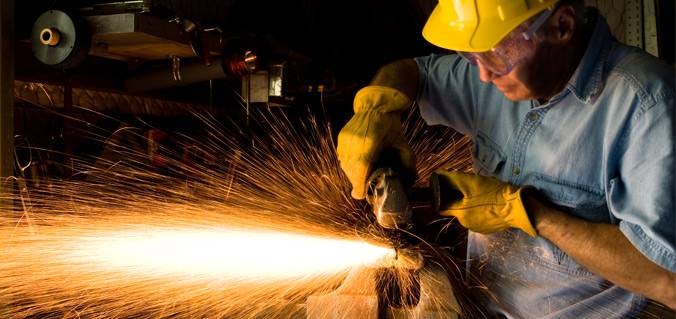What do the regulations require you to do?
The Control of Noise at Work Regulations 2005 require employers to prevent or reduce risks to health and safety from exposure to noise at work. Employees have duties under the Regulations too.
The Regulations require you as an employer to:
- Assess the risks to your employees from noise at work
- Take action to reduce the noise exposure that produces those risks
- Provide your employees with hearing protection if you cannot reduce the noise exposure enough by using other methods
- Make sure the legal limits on noise exposure are not exceeded
- Provide your employees with information, instruction and training
- Carry out health surveillance where there is a risk to health.
The Regulations do not apply to:
- members of the public exposed to noise from their non-work activities, or making an informed choice to go to noisy places;
- low-level noise that is a nuisance but causes no risk of hearing damage.
Employers in the music and entertainment sectors had until the 6th April 2008 to comply with the Noise Regulations 2005. They had to continue to comply with the Noise at Work Regulations 1989, which the 2005 Regulations replaced for all other workplaces.
What are the action levels and limit values?
The Noise Regulations require you to take specific action at certain action values. These relate to
- the levels of exposure to noise of your employees averaged over a working day or week; and
- the maximum noise (peak sound pressure) to which employees are exposed in a working day.
The values are:
- lower exposure action values:
- daily LEP,d or weekly LEP,w exposure of 80 dB;
- peak sound pressure (LCPeak) of 135 dB;
- upper exposure action values:
- daily LEP,d or weekly LEP,w exposure of 85 dB;
- peak sound pressure (LCPeak) of 137 dB.
There are also levels of noise exposure which must not be exceeded.
These are called exposure limit values. The exposure limit values are:
- daily LEP,d or weekly LEP,w exposure of 87 dB;
- peak sound pressure of (LCPeak) 140 dB.
What Do You Need To Measure for Noise At Work?
When making measurements to estimate the noise exposure of a person at work, you need to ascertain the equivalent continuous A-weighted sound pressure level (LAeq) that represents the noise the person is exposed to during the working day. You also need to ascertain the maximum C-weighted peak sound pressure level or levels to which the person is exposed.
The action levels described in the regulations are given as daily (LEP,d) or weekly (LEP,w) exposure values along with peak sound pressure levels, all in dB.
A sound level meter cannot measure LEP,d or LEP,w directly as these are calculated from two other parameters which are recorded during the measurement. These are:
- The equivalent continuous A-weighted sound pressure level in decibels that represents the sound the person is exposed to during the working day
- This is commonly known as the Leq and may be shown as LAeq or LAeq,t
- The duration over which the Leq is measured
With this information, you can calculate the LEP,d using the formula given in the Noise at Work Regulations (Schedule 1 Part 1 paragraph 1)
You should also measure the maximum C-weighted peak sound pressure level
- This will usually be displayed on your sound level meter as Peak(C) dB or LCPeak
- In accordance with the regulations, this should always be measured with C-weighting
With these two measurements for each different activity to be assessed, you can calculate the LEP,d and where required the LEP,w values.
If you will need to provide PPE or hearing protection, you may also need to record additional values such as the C-weighted Leq (LCeq) or the Leq of the noise in Octave Bands.
This information can be used to assess the effectiveness of hearing protection. The optimus red sound level meters can provide these functions in addition to the LAeq and C-weighted peak values.
What do you need to measure these values?
Sound level meter measurements
Your sound level meter should:
- At a minimum be capable of measuring
- Equivalent Continuous Sound Pressure Level (LAeq)
- C-Weighted Peak Sound Pressure (LCPeak)
- Optionally be capable of measuring
- C-Weighed Leq for selection of PPE using the HML method
- Octave band Leq values for selection of PPE using the Octave Band method
Meet at least the requirements of
- Class 2 of BS EN 61672-1:2003 (the current standard for sound level meters or
- Type 2 of BS EN 60804:2001 (the former standard)
You should be able to calibrate your sound level meter using an Acoustic Calibrator which meets the requirements of at least Class 2 of BS EN 60942:2003.
To ensure that your equipment is calibrated correctly, you should not use a sound level meter and acoustic calibrator from different manufacturers unless you have very specific information and instructions as to how these two units will work together. It is possible to create large errors in the calibration level which should be avoided wherever possible.
Noise dosimeter/Personal sound exposure meter measurements
Noise Dosimeters or Personal Sound Exposure Meters
A noise dosimeter may be very useful for measuring noise exposures of workers who are mobile, driving vehicles, working in environments where access is difficult or where their working pattern varies significantly and may be difficult to predict.
A noise dosimeter should:
- measure the LAeq and LCPeak values over the measurement
- be calibrated in the same way as a sound level meter before, and ideally after, each measurement
- meet the requirements of BS EN 61252:1997 (Note that noise dosimeters have no class or type number)
Acoustic Calibrator requirements
An acoustic calibrator should be used to check the meter each day before and after making any measurements.
An acoustic calibrator will generate a tone at a specified level and frequency for a specified microphone. This is the reason that you should not use an acoustic calibrator and sound level meter from different manufacturers without some very detailed and specific information.
Some sound level meters may have an internal electrical calibration. Be aware that this type of calibration does not check the microphone capsule which is the most commonly damaged part of a noise meter.
Your acoustic calibrator should meet at least Class 2 of BS EN 60942:2003.





